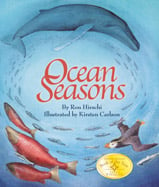Alignment to Standards for AL

| Grade | Number | Standard |
|---|---|---|
| 1 | S.Gr 1.4.) | Describe survival traits of living things, including color, shape, size, texture, and covering. |
| 1 | S.Gr 1.4.b) | developmental stages of plants and animals. Examples: plants-seed developing into seedling, seedling developing into tree; animals-piglet developing into pig, kid developing into goat, |
| 1 | S.Gr 1.4.c) | Describing a variety of habitats and natural homes of animals |
| 2 | S.Gr 2.6.) | Identify characteristics of animals, including behavior, size, and body covering |
| 2 | S.Gr 2.6.b) | Identifying migration and hibernation as survival strategies |
| 2 | S.Gr 2.7.) | Identify geological features as mountains, valleys, plains, deserts, lakes, rivers, and oceans. |
| 2 | S.Gr 2.7.a) | Identifying local landforms and bodies of water |
| 2 | S.Gr 2.9.) | Describe evaporation, condensation, and precipitation in the water cycle. |
| 2 | SS Gr 2.7a.) | Compare physical features of regions throughout the world: desert, tropical rainforest, and a polar region |
| 3 | S.Gr 3.10.) | habitat conditions that support plant growth and survival: deserts support cacti, wetlands support ferns and mosses |
| 3 | S.Gr 3.7.) | the role of plants in a food chain |
| 3 | SS Gr 3.2.) | physical characteristics, including landforms, bodies of water, soil, and vegetation of various places on Earth: landforms-mountains, hills, plateaus; bodies of water-oceans, rivers, lakes; soil-silt, clay, sand; vegetation-tropical, desert, plains |
| 3 | SS Gr 3.2c.) | Earth processes, including continental drift, erosion, natural hazards, weather, and climate |
| 3 | SS Gr 3.3.) | Identify components of various ecosystems. |
| 3 | SS Gr 3.5a.) | Differentiating between producers and consumers and imports and exports: producers-suppliers, sellers; consumers-buyers; imports-coffee from Colombia, pineapples from Hawaii; exports-corn from Iowa |
| 3 | SS Gr 3.7a.) | Locating major natural resources and deposits throughout Alabama, the United States, and the Western Hemisphere |
| 4 | S.Gr 4.5.) | the interdependence of plants and animals. |
| 4 | S.Gr 4.5.a) | Describing behaviors and body structures that help animals survive in particular habitats Examples: behaviors-migration, hibernation, mimicry; body structures-quills, fangs, stingers, webbed feet |
| 4 | S.Gr 4.5.b) | Describing life cycles of various animals to include incomplete and complete metamorphosis: Examples: damsel fly, mealworms |
| 4 | S.Gr 4.5.c) | food chain producer, first-level consumer, second-level consumer, and third-level consumer |
| 4 | S.Gr 4.5.d) | Identifying characteristics of organisms, including growth and development, reproduction, acquisition and use of energy, and response to the environment |
| 4 | S.Gr 4.6.b) | grouping of organisms into populations, communities, and ecosystems |
| 4 | S.Gr 4.7.) | geological features of Earth, including bodies of water, beaches, ocean ridges, continental shelves, plateaus, faults, canyons, sand dunes, and ice caps. |
| 5 | S.Gr 5.9.) | Describe the relationship of populations within a habitat to various communities and ecosystems. |
| 5 | S.Gr 5.9.a) | relationship between food chains and food webs |
| K | S.Gr K.6.) | Compare size, shape, structure, and basic needs of living things. |
| K | S.Gr K.6.a) | Identifying similarities of offspring and their parents |
| K | S.Gr K.8.) | Identify features of Earth as landmasses or bodies of water. |
| K | S.Gr K.9.) | Identify seasons of the year. |
| K | S.Gr K.9.a) | seasonal changes in the weather |